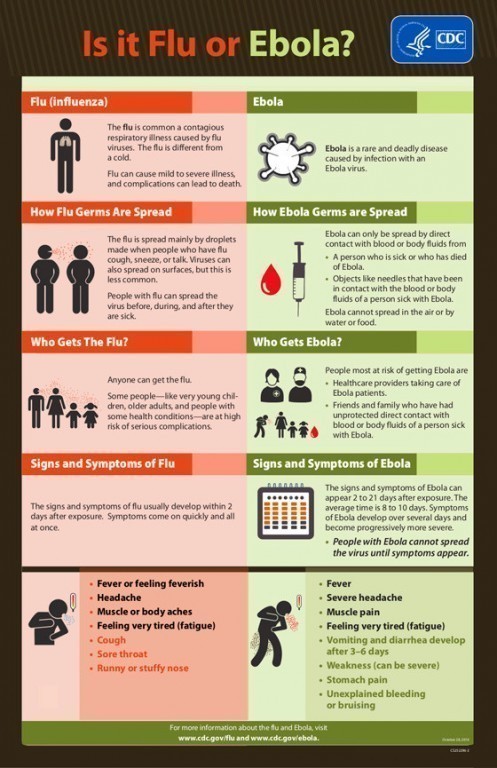You should be more concerned about the flu than Ebola
‘More New Yorkers die from influenza and pneumonia’
While Ebola is getting the big headlines these days, don’t ignore more common viruses including the flu or Enterovirus 68.
There are many different viruses; some are more contagious or have different pathways to be spread than others. Some die instantly when airborne, while others may live for many days on solid objects. Viruses that have led to illnesses include the flu, colds, HIV, Ebola and Hepatitis.
The severity of virus transmission risk is weighed upon a few factors, including the viral load, mode of transmission, half-life outside host, and the immune response of the new host.
Ebola
Ebola has killed 5,000 people in West Africa, making it the worst outbreak in the history of the disease. But in the U.S. there have been just four diagnosed Ebola cases to date, with one death. The most recently diagnosed case was that of a doctor in New York City that has prompted further panic.
According to the Centers for Disease Control, Ebola is spread through direct contact through broken skin or mucous membranes — for example, the eyes, nose, or mouth — with blood or body fluids of a person who is sick with Ebola. It is not spread through the air or by water, or in general, by food. Healthcare providers treating Ebola patients — and the people in close contact with those patients —have the greatest risk of getting sick, because they may come in contact with infected blood or body fluids.
Ebola is killed with hospital-grade disinfectants, such as household bleach and Lysol; Ebola on dry surfaces can survive for several hours. However, virus in body fluids such as blood can survive up to several days at room temperature. Once someone recovers from Ebola, they can no longer spread the virus. However, Ebola virus has been found in semen for up to 3 months.
There is no evidence indicating that coughing or sneezing spreads the Ebola virus. However, droplets (splashes or sprays) from a person who is sick could be infectious, and therefore certain precautions are recommended for use in healthcare settings to prevent the transmission to healthcare personnel and other patients or family members.









